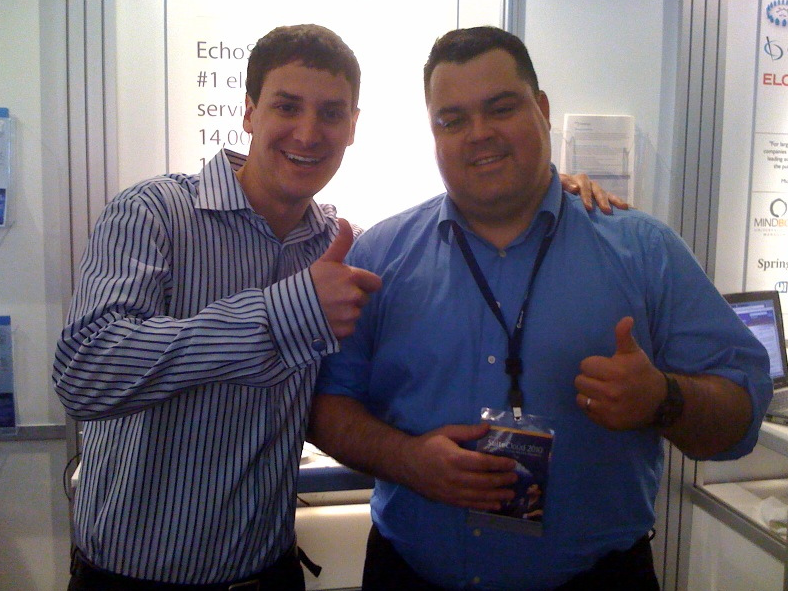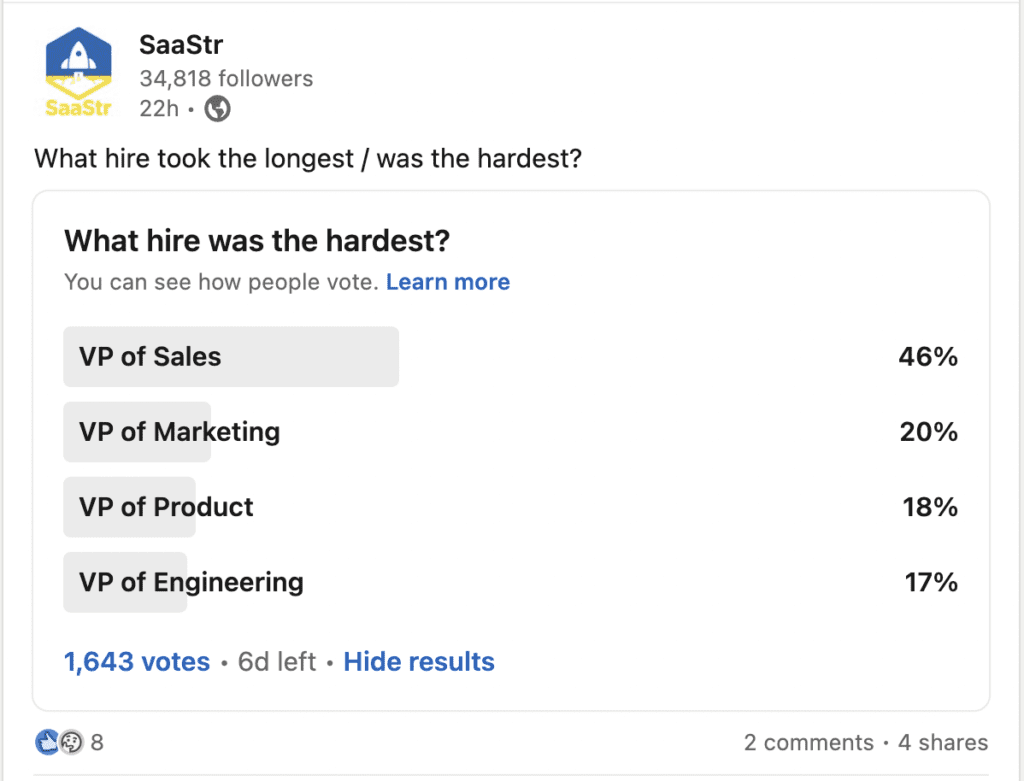We’ve talked a lot about hiring a VP, Sales. It’s just such a critical accelerate-or-decelerate decision for a post-Initial Traction SaaS company. We’ve talked about the 48 Different Types of VP Sales, What a VP Sales Really Does, and a Script to Use When Interviewing a VP Sales.
But even armed with all that, I’ve gotta admit, I’ve helped several friends hire a VP Sales recently and even with that we have barely batted .500
In those cases, no “big mistake” hire was made. But still, some hires didn’t work out. It took me a while to figure out why. In one case, one of the investors thought it was just too early, too hard to get a great VP Sales — in this case, at a $6m in ARR, growing 100% YoY, kick-arse SaaS company. To that, I say — Rubbish. Joining a medium-hot SaaS start-up with incredible logo accounts, $6m in ARR, and 100%+ organic growth is a dream job for an up-and-coming VP Sales.
So what’s the remaining issue? Why do reasonably hot SaaS companies still struggle to get a Great VP Sales, even with the right filters, scripts, and processes? I thought back and realized — the issue is Time.
Why? Imagine you are a Great VP Sales yourself. You’re in a good gig, making a ton of money. You’re there for the equity and the Big Win, yes — but also the cash. Make no mistake about that. The VP Engineering you hired is all about the equity. Others, it will all be about the journey. But for your VP, Sales, equity is table stakes, but Cash Matters.
So if you’re doing well, in a good spot — it doesn’t make a ton of sense to just Jump. If you’re a VP or Director Engineering candidate, the old job is getting stale, and you’re offered a great package at something new — jumping can make sense. You’re jumping from one equity package and POS code base to a new equity package and hopefully a slightly less POS code base.
But the VP Sales that’s killing it is different. He or she will likely be reasonably comfortable. Tons of cash. Fair equity. A good team under him or her. A decent boss (a bad boss is always a big risk for a VP Sales). And knows the job cold. How to compete. How to counter-FUD. How to close.
Now if that VP Sales walks into a new gig, the job’s not just adding new features, refactoring, etc. It’s taking a Big Frackin’ Risk. From relatively easy cash, in a dialed-in machine, to a high degree of uncertainty in a new environment. Yes, the excitement of new equity is there. But cash is big too.
So my only point here is, if you’re a Great VP Sales — it makes sense to Take Your Time. Wait. See more proof points. Build a relationship with the CEO of a potential new company. Watch progress. And only then — jump.

And if I look back at my first Real VP of Sales, Brendon Cassidy — it actually took me about 20 months to recruit him. I first “met” him on the phone, when he was heading corporate sales at LinkedIn, and he was a reference for a hire I wanted to make. He gave me some insanely great advice in that reference call, we kept loosely in touch, and when the time was right, we had more customers, more proof points, more under our belt — the timing was right for him. Twenty. Months. Later.
Now maybe I could have and certainly should have tried to hire him earlier. 😉 No doubt.
But my learning from that, and from recent VP Sales hiring processes is this: You Need to Always Be Hiring a VP, Sales. Always. And if you can, start 12+ Months before you need one. Because many of the good ones will look, hard and long, before they leap. You won’t be able to close them in 30 or 60 days, no matter how great a CEO you are or how well you convince others to join you.
> Start at $1m in ARR is my advice. Don’t wait until you are $2m, or $4m, or whatever to at least meet and soft-pitch as many great VP Sales candidates as you can. Because they may need 12-18 months on their side. Period.
(note: an updated SaaStr Classic post)


